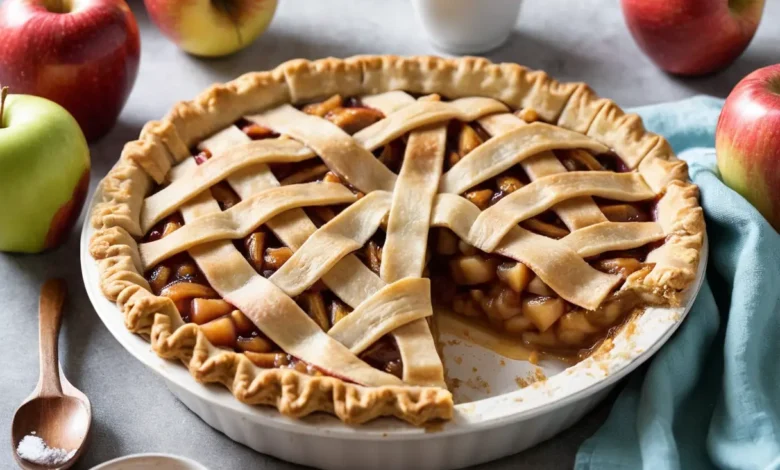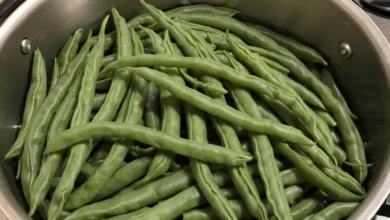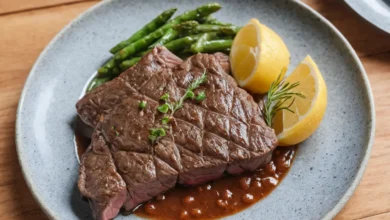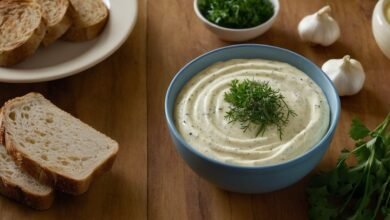Apple Pie Filling Recipe: The Ultimate Guide for Perfectly Sweet and Tangy Homemade Apple Pie

There’s something magical about the smell of a freshly baked apple pie. It evokes feelings of warmth, comfort, and nostalgia. But what makes an apple pie truly irresistible? It’s the filling, of course! A well-made apple pie filling can turn an ordinary dessert into something extraordinary. Whether you’re baking a pie from scratch or prepping a quick dessert, knowing how to make the perfect apple pie filling is essential.
In this guide, we’ll share an easy and foolproof apple pie filling recipe that will elevate your baking game. Packed with sweet apples, fragrant spices, and a balance of tartness and sweetness, this filling will ensure that every slice of your pie is nothing short of perfection. Plus, we’ll answer some frequently asked questions about apple pie fillings and provide pro tips to ensure you get it right every time. Let’s get started!
How to Make Apple Pie Filling: Step-by-Step Recipe
Ingredients
- 6 large apples (preferably Granny Smith or Honeycrisp)
- 1 cup granulated sugar
- ½ cup brown sugar
- ¼ cup cornstarch
- 1 tsp cinnamon
- ¼ tsp nutmeg
- ¼ tsp allspice
- Pinch of salt
- 2 tbsp lemon juice (freshly squeezed)
- ½ cup water
- 1 tsp vanilla extract
- 2 tbsp unsalted butter
Instructions
Step 1: Prepare the Apples
Begin by peeling, coring, and slicing the apples. For best results, aim for slices that are about ¼ inch thick. This thickness allows the apples to cook evenly while maintaining some firmness.
Step 2: Combine Dry Ingredients
In a large bowl, mix together the granulated sugar, brown sugar, cornstarch, cinnamon, nutmeg, allspice, and a pinch of salt. The combination of sugars adds depth of flavor while the cornstarch acts as a thickening agent for the filling.
Step 3: Cook the Filling
In a large saucepan, melt the butter over medium heat. Add the apples, water, lemon juice, and vanilla extract. Stir to combine. Sprinkle the sugar-spice mixture over the apples and stir until the apples are evenly coated.
Cook the apples over medium heat, stirring occasionally, until they start to soften, and the mixture thickens (about 10-15 minutes). Be sure not to overcook the apples, as you want them to retain a slight bite once baked in the pie.
Step 4: Cool and Store
Once the filling has reached the desired consistency, remove it from the heat and allow it to cool. You can use it immediately in your apple pie, or store it in an airtight container in the refrigerator for up to five days. Alternatively, freeze the filling for up to three months.
Frequently Asked Questions (FAQs)
1. What are the best apples for apple pie filling?
The type of apple you use is critical to the flavor and texture of your pie filling. Granny Smith apples are a popular choice because of their tartness, which balances the sweetness of the filling. Honeycrisp, Braeburn, and Golden Delicious apples are also excellent options, as they hold their shape well when baked. For a more complex flavor, consider mixing different apple varieties.
2. Can I use canned or frozen apples for pie filling?
Yes, you can use canned or frozen apples for pie filling, but fresh apples are always recommended for the best texture and flavor. If using canned apples, be sure to drain them thoroughly before using. For frozen apples, let them thaw completely and drain any excess moisture to avoid a watery filling.
3. How do I prevent my apple pie filling from becoming too watery?
A watery filling is a common problem that can ruin the texture of your pie. To avoid this, use the right amount of cornstarch as a thickening agent. You can also precook the apples, as described in this recipe, to release some of their natural moisture before adding them to the pie. Another tip is to let the pie cool completely before cutting, as the filling will continue to set as it cools.
4. Can I make apple pie filling ahead of time?
Absolutely! Apple pie filling can be made ahead of time and stored in the refrigerator for up to five days or in the freezer for three months. Making it in advance is a great time-saver for holiday baking or special occasions. When you’re ready to use the filling, just thaw it if frozen, and you’re good to go.
5. How can I add more flavor to my apple pie filling?
While the classic apple pie filling is already delicious, you can take it up a notch by adding more spices such as cardamom or ginger for a spicier flavor. A splash of bourbon or rum can also add depth to the filling. For a caramelized twist, you can cook the apples with a bit of brown butter before mixing in the sugar and spices.
6. Why is lemon juice important in apple pie filling?
Lemon juice serves two important purposes. First, it prevents the apples from browning as you prepare them. Second, it adds a subtle tangy flavor that balances the sweetness of the filling, making the final product more flavorful.
Pro Tips for Perfect Apple Pie Filling Every Time
- Choose the Right Apples: As mentioned earlier, a mix of sweet and tart apples can provide a more balanced flavor. Always use firm apples to prevent a mushy filling.
- Don’t Skip the Lemon Juice: Aside from keeping your apples looking fresh, the acidity in lemon juice brightens the flavor and cuts through the sweetness.
- Thicken Properly: Use cornstarch or flour to ensure your filling isn’t too runny. Adjust the amount based on how juicy your apples are.
- Let the Pie Cool: It might be tempting to cut into a hot apple pie, but letting it cool allows the filling to set, ensuring that each slice is perfectly cohesive.
Conclusion
Mastering the apple pie filling is a crucial step to making an unforgettable apple pie. With this easy, step-by-step recipe, you’ll be able to create a filling that is perfectly sweet, slightly tart, and packed with warm spices. Whether you’re making a traditional apple pie or using the filling for another dessert, this recipe will give you consistently delicious results.
Don’t hesitate to customize the flavor with different apple varieties, spices, or even a splash of your favorite liquor. Now that you know how to make the ultimate apple pie filling, the next time you bake, you’ll impress everyone with your skills—and tastebuds will thank you!





